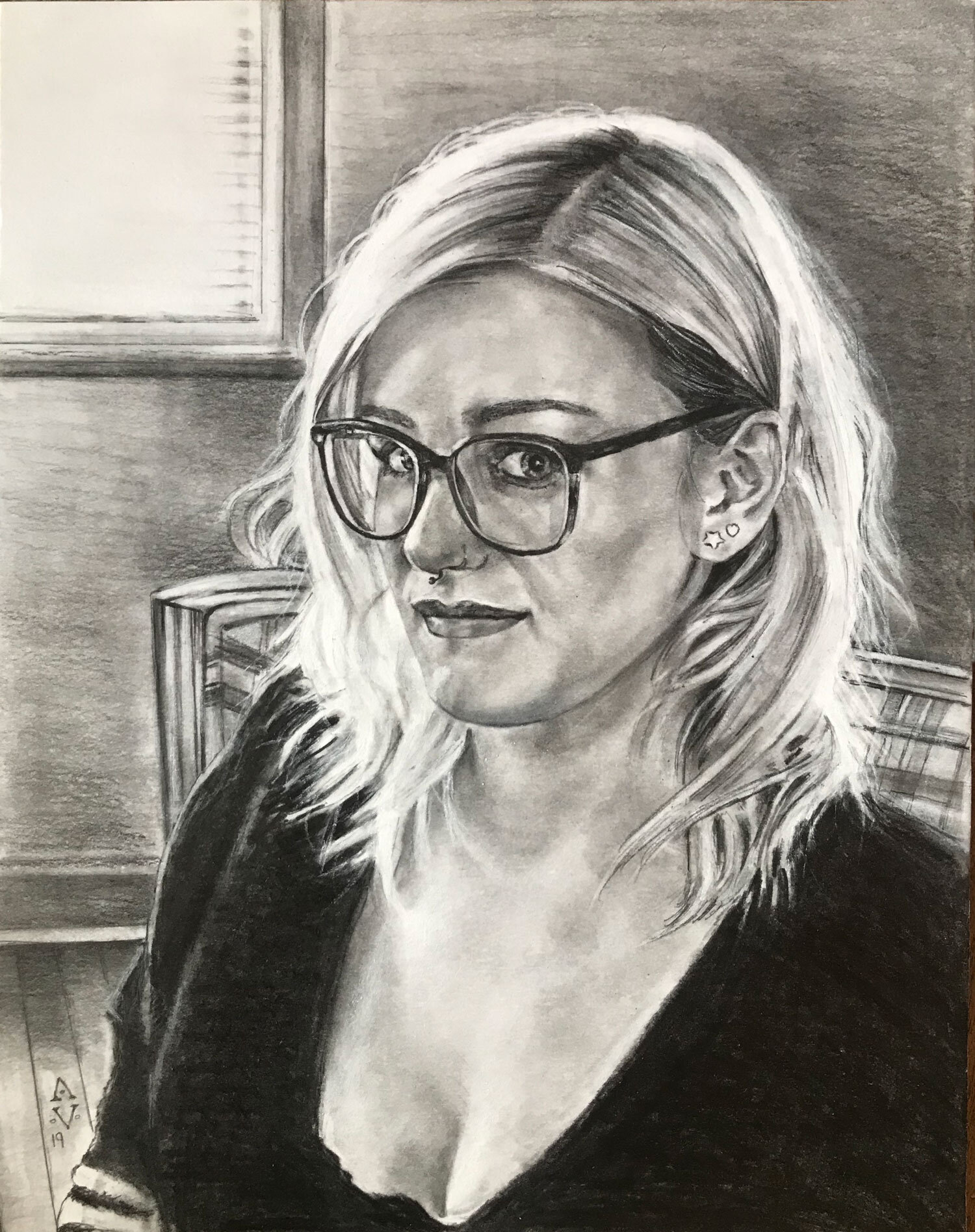The Portrait Gallery
The Portrait Process
Drawing
I thoughtfully sketch the head with graphite on paper paying close attention to the structure, shape, and space to create a strong portrait composition. Once the initial drawing is completed, I begin to render the portrait in detail and tonal value with emphasis on the eyes, nose, and mouth. The material and background are rendered and a fixative spray is applied, which fastens the graphite to the drawing surface and accentuates the darks and lights of the portrait. The drawing is then transferred to the painting surface.
Underpainting
Once the drawing is transferred to the painting surface, a color tone is selected to compliment the “ feel “ of the portrait mood in which I would like to convey. In this example, phthalo blue and cerulean blue are mixed with a medium and glazed over the entire piece. The glazing process layers translucent tones of color defining the dark and light areas of both the portrait subject and background. Once the underpainting is complete, it is left to dry for a few days.
Modeling
The painting is now developed and detailed in color, light, and texture with gentle layering of flesh tones, hair, clothing, and jewelry. A neutral color is painted in the background of the composition, which often casts the portrait to the foreground. A neutral to warm grey was selected in this example. The painting can be complete in this stage as a looser and softer representation of the subject, or developed further in the paintings refinement.
Final Stage
The final stage creates a refinement of line, detail, tone, and color. The portrait elements of flesh, hair, and clothing are layered more fully in detail by painting glazes and textures. The background is structured with fuller color and tonal values until the overall painting has a “ finished “ quality and look. I then sign the painting, but never call it complete.
“A Painting is never finished- it simply stops in interesting places.”
“GRETCHEN” oil on panel 30 x 21” 2017
"CIGAR MAN II” oil on canvass 30” x 30” 2013
"THE DIRECTOR" graphite on paper 30” x 24” 1992
"CHEERS” oil on canvas 34” x 28” 2012
"LAUREN" oil on canvass 15” x 20” 2007
"BO" oil on panel 24" x 16" 2017
“NENE” Graphite and chalk on toned paper 14” x 11” 2020
“NOLA” oil on canvass 2013
“CHARLES” oil on canvass 26” x 20” 2011
“ALABAMA” graphite and white chalk on paper 16” x 20” 2019
“PRETTY RICKY” oil on canvas 30” x 22” 2013
"SISTERS BY THE SEA” oil on canvas 16” x 20” 2015
“MOLLYS FAMILY” oil on panel and study 48” x 24” 2018
“MR AND MRS JOEY & CHRISTY PORTER” oil on panel and study 33” x 27” 2020
IVORY, LOVE, BIG SNACK, AND JOY” 48” x 24” oil on panel 2019
” PATRICIA JEAN” oil on panel 37” x 22” 2020
” PATRICIA JEAN” graphite on paper

























